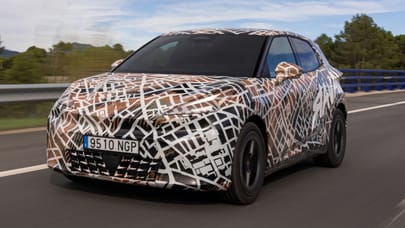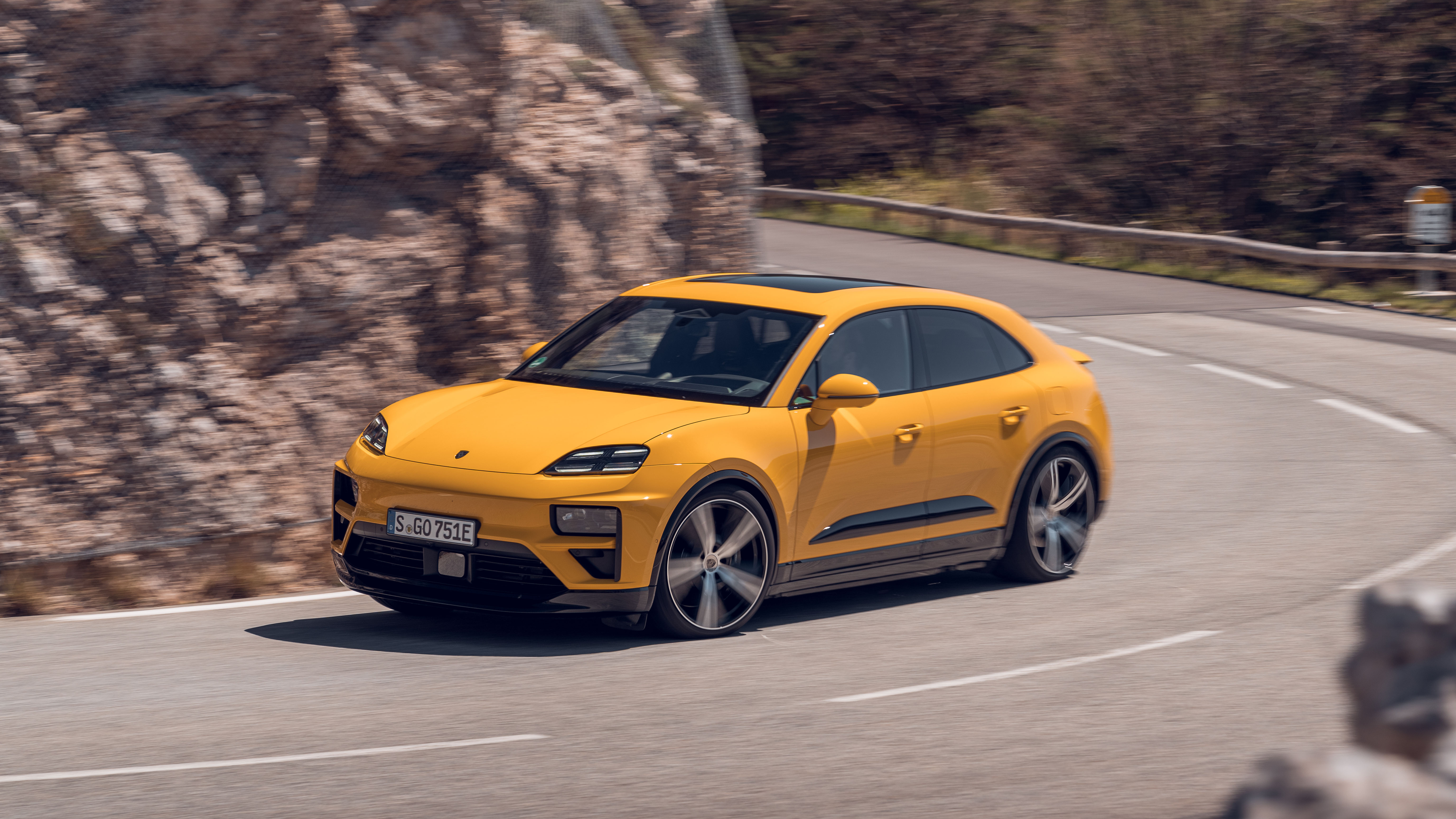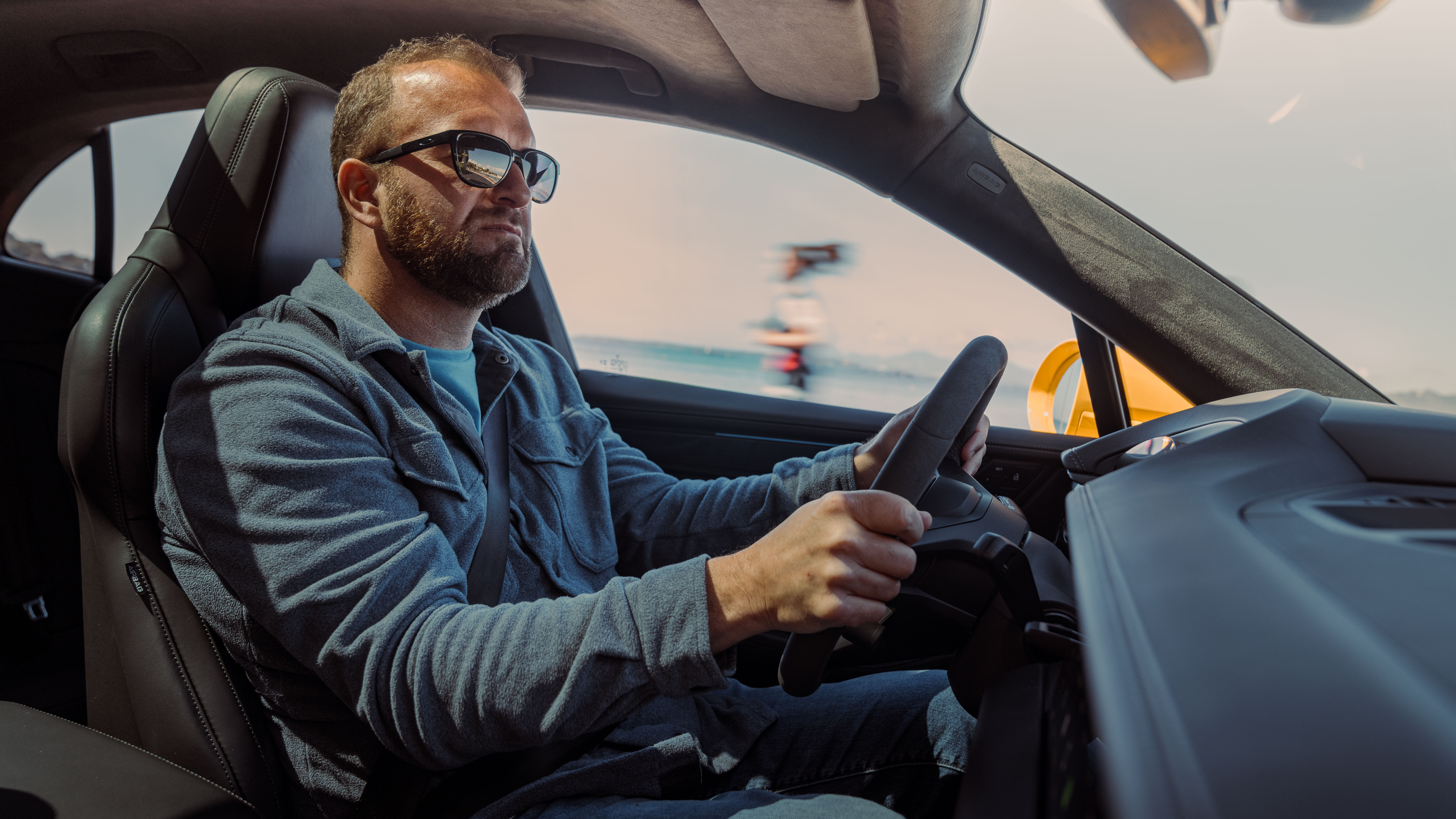
Big Mac: full throttle in the new electric Porsche Macan
Larger, heavier, more expensive – the new Macan has gone exclusively electric. Does the Porsche magic remain?
The crowds are promenading, dressed in the kind of nautical stripes, pastel linens and yacht tans that only make sense down here on the French Riviera, and you can almost smell the heady scent of rich. The traffic is much more proletarian, beaten Fiat 500s, Smart cars and the odd fancy bit of metal, all local traffic sporting the bumps and bruises of French street parking.
The scars are normal – these urban backroads were designed before cars got big, and they’re only just wide enough for two medium-sized cars to pass as long as everyone breathes in and grits their teeth.
The new Porsche Macan Turbo feels wide. It isn’t – it’s still just a medium-sized SUV – but here it feels like a Cayenne, half an inch and a twitch from milling the shiny 22in wheels on emotionless granite kerbs. The Macan might be Porsche’s smallest sporty SUV, but it feels hemmed.
Photography: Alex Tapley
Obviously there’s time to appreciate the new, bigger interior, featuring a dashboard full of screens (including a pointless, optional, Netflix enabled passenger screen), the massive head-up display and ultra-quick Android-based operating system. There’s time to note the excellent quality, fit and finish, the 28mm lower seating position than the ICE car, but to be honest, after an hour, the traffic is making me want to chew my nails off.
There’s also initial worry, because this new electric only version doesn’t feel sporty at all. Set in its most accommodating mode, it feels soft, languid even. Traffic calming speedbumps are relegated to faint thumps by suspension that feels almost therapeutic. The body is controlled, but it certainly doesn’t feel like it’s going to be in any way precise when things get faster. There are still the usual in-town electric advantages, mind... it’s quiet, slick and comfy.
Porsche likes a long travel throttle pedal, so it’s not as jumpy and reactive as some electric cars, but it’s got that surge across junctions, the ability to sneak and nip. Yet we’re headed out of town to the mountains to find a bit of space. This is still a Porsche, and it deserves more than just a sub-30mph assessment.
As we glide out, it’s worth noting that this really is an all-new Macan, and the condensed highlights read something like this: electric only, two models initially, Macan 4 and a Macan Turbo, both dual motor (and therefore all-wheel drive), both bellied with a hefty 100kWh battery capable of 800V charging with a 270kW max. The 95kWh of usable capacity from that set of cells yields 380 miles of possible range for the 4, only a touch less for the Turbo at 367. Which is still probably high 200s in the real world – useful enough for most.
Neither are particularly slow, with the 4 hitting 62mph from rest in 5.2 seconds and the Turbo knocking out the benchmark in 3.3. Just for reference, stat fans, that’s as fast as a 911 GT3. Interestingly, both of those sprints are only during full-on launches – the Macan 4 makes about 385bhp under light duty running, 408 during a launch or full throttle. Similarly, the Turbo produces 580ish bhp tootling around and 635bhp/833lb ft when you floor it. Both have the same front motor, with the Turbo adding a much more powerful rear unit to produce the gains.
Everything is new. The unseen Premium Platform Electric architecture is shared with Audi and underpins the Q6 e-tron and the forthcoming A6 e-tron. That means that Porsche needed to make some adjustments to try and eke out a different character from the same bones. The rear motor is in a different place – actually behind the rear axle line, so the weight bias is 48:52 front/rear for the Turbo – the electronics and delivery are different, the suspension has bespoke tuning and the steering has different physical elements. Maybe not the easy variance that you get with an ICE drivetrain, but Porsche has apparently put some effort in here.
After a couple of easy straights and hard corners out of town, it’s pretty obvious that it works. There’s two-valve damping that essentially allows for a greater distance between squish and sportiness, plus air suspension that’s standard on the Turbo and optional on the usually steel sprung 4. The result is a car that feels luxuriously sloppy over those urban speedbumps, weight working with the damping to soften the edges of even the acned tarmac.
But flick through the various modes on the steering thumbwheel (Off-road, Normal, Sport, Sport+) and the suspension will raise or lower accordingly, response ratcheting up as ultimate comfort falls away. And that’s when this Porsche starts to show teeth.
Top Gear
Newsletter
Thank you for subscribing to our newsletter. Look out for your regular round-up of news, reviews and offers in your inbox.
Get all the latest news, reviews and exclusives, direct to your inbox.
Yes, the Turbo is osteo-adjustment quick. But that’s expected. The problem with devastatingly fast, battery powered acceleration is still the same though – you can make a big power EV suck the horizon through the windscreen like a comedy vacuum cleaner, but battery mass is the killer. Not so much of a problem when you need traction for a launch and torque is instantly available, less desirable when you’re braking into a downhill corner and the car feels like it wants to chew through its outside front tyre.
Put simply, fast electric SUVs tend to feel like a bowling ball shot from a cannon – cornering finesse punched in the face by ineffable weight. And there is mass here: the 4 is 2,330kg unladen, the Turbo just over 2,400. You can feel it. But the faster you go, the weirder it gets.
In a slightly strange twist, when other cars in this class are running out of ideas and starting to wilt in the face of the physics, the Macan – and especially the Turbo – gets better, ups its game. No, it’s not a Taycan, and no it’s probably not as deft as an ICE Macan GTS at flick-flack direction changes, but the way that it deals with traction, delivery and execution offers a new benchmark in the class.
Obviously there’s a lot of expensive thinking gone into making it feel natural, but when you combine Porsche’s optional rear-wheel-steer system, mild brake-based torque vectoring and any number of Porsche branded traction management aids, you get something quite special – an electric SUV that drives like a Porsche. It’s mainly to do with the steering – compared to other cars in this class, you really can feel what’s going on with those front tyres – but also to do with how the car leaves a corner. It feels rear-biased, very concentrated on the throttle position.
It’s also very regular – too fast and you get a bit of understeer, which gently transitions to oversteer if you keep on it. Prod a bit more and the front axle motor wakes up a little more and pulls you straight. It’s easy to be neat. The car doesn’t shrink around you – there’s just too much weight for that – but it feels lighter than it is. Bluntly, the more you drive it, the better it gets.
I think the only real criticism here is that the Turbo only really starts to show what it can do at 70 per cent effort plus. That means you’re heading into full commitment territory, and a mid-sized SUV generally doesn’t get driven like that. The 4 is probably the more sensible choice for 90 per cent of people, and it’s got all the tricks. But it also has 50 per cent less horsepower, so it’s less outright fun.
There’s a single motor on the way with the max possible range and most likely a GTS – because that’s just what Porsche tends to do, and there’ll be a sweetspot in there somewhere. But the fact remains that no matter which Macan you choose, you’re getting the most desirable medium SUV on the market.
More than that, you’re getting a real Porsche, a car that neatly encompasses what a daily driven Porsche should be in terms of practicality, size and driver enjoyment. It’s an electric car that doesn’t require caveats or justification. And for those reasons, it’s Top Gear’s overall Electric Car of the Year.











